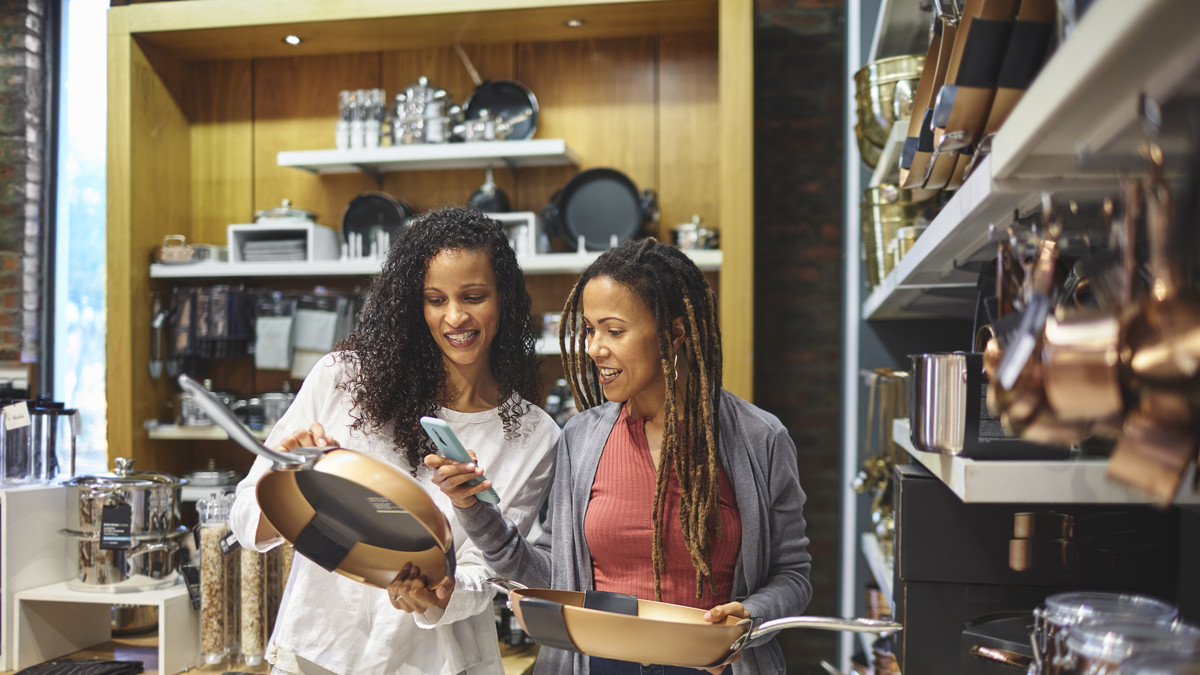Retailers nationwide are searching for the coveted competitive edge. Rather than a shortsighted cost-cut or an investment in a negligible feature of your stores, consider focusing on the quality and ingenuity of your customer experiences.
Raydiant’s State of Consumer Behavior 2022 report found customer experience has a direct effect on revenues as 83% of shoppers are likely to make a second trip to your store when you provide a positive in-location experience. And, 63% of shoppers will spend more when they feel that an in-store experience is pleasing.
At a time when shoppers are spending less due to rising costs of living, these findings are eye-opening for organizations that have put the customer experience on the back burner.
Even organizations that place a priority on all aspects of the customer experience might ask: are we measuring each investment we’re making in the customer journey?
With clearer metrics for the successes (and shortcomings) of your in-location experiences, your organization can remain lean and effective as margins for error grow thinner.
How to measure success of the in-store experiences
When you provide great customer experiences, you’re aiming to influence the customer in ways that benefit your organization. The “you scratch my back, I’ll scratch yours” mentality absolutely applies to great customer experiences — you provide the shopper a memorable escape from their worries, and they reward you with more spending, repeat visits, and loyalty to your brand.
Here’s a framework that you can rely on to see if you’re achieving the organizational benefits that excellent customer experiences provide.
* (Company name) will offer an (experience) to customers because we believe it will lead to (behavioral change). By influencing the customers behavior, we believe it will lead to (objectives). To measure our success, we will track (key results).
And a specific example of the framework in action:
* Jenny’s Cookware will offer five new self-checkout kiosks to customers because we believe it will lead to customers checking out faster with less dependence on employees. By allowing customers to check out on their own, we believe it will lead to shorter wait times, greater return on labor costs, and greater customer satisfaction.
* To measure our success, we will track total in-location revenue divided by the number of employees. We will also track the average speed with which customers are able to complete their orders, average wait times in checkout lines, and overall customer satisfaction with our checkout options.
Though this framework will not look precisely the same for every organization or experience, it provides a near-uniform approach for measuring the value of each feature of your store. It’s not a revolutionary concept — each investment you make in customer experience must have a clear, measurable goal, and you must actively monitor progress toward that goal. However, too many organizations fail to make such basic calculations on a consistent basis.
Every time a customer walks through your store, they’re immersed in a tapestry of micro-experiences. A digital sign is an experience in itself, with the multiple purpose of informing the customer about deals and products, directing them through the store, and providing a vibrant visual touch. Customer-employee interactions, checkout options, product arrangements, and loyalty programs are also micro-experiences.
Each of these experiences has an intended goal. For some, the goal is to drive revenues. For others, the goal is to build brand loyalty or heighten perceptions of value. In the long run, each goal will work towards the sustainability and financial health of your organization.
So what makes for a positive in-location experience?
Now that you understand the potential value of great in-location experiences, and how to measure the success of each experience, it’s time to identify the foundations of a positive customer journey.
When we asked shoppers what most defines a positive in-location experience, this was the response:
1. The product selection and variety in a store (31.9%).
2. The quality of customer service (26.4%).
3. The organization of the store and products within the store (17.5%).
Product selection and variety is important, but may be more or less comparable among brick-and-mortar competitors. Where you may have the most opportunity for improvement is in the customer service department.
McKinsey explains personalization has become the defining feature of a good retail experience. It also notes that proprietary data and other tech-driven solutions are providing the greatest advancements in customer service. By investing in apps, feedback engines, and in-store technology that homes in on customers’ personal preferences, innovative retailers are giving shoppers more of what they like in a more efficient manner.
From providing shopper-specific deals to deploying your staff in ways that your customer base finds most helpful, digitization is driving better customer service and experiences.
The future is all about in-location experiences
With all the hoopla surrounding e-commerce, it’s easy to forget 90% of global retail sales still occur in brick-and-mortar locations. Most customers still want to go to the store, and they want to go to a store that offers them exciting, innovative experiences they can’t find on a web page.
All brick-and-mortar organizations have an opportunity, even as the price of shopping rises by the day. Consumers are picking their brand partners as carefully as ever. If you can position yourself as a destination not just for quality products, but for outstanding experiences, then customers will gravitate to your stores and spend more during each visit.
In order to gain this advantageous position, you must have a reliable framework for measuring the impact of each in-store experience. You must try the latest technologies that may deliver value to your customers, double down on those that work, and ditch those that don’t.
The future remains about experiences, including those that take place in your stores. With clear objectives and a will to serve your customers, the future can be bright.
This article was written by Bobby Marhamat from Retail Customer Experience. News Features and was legally licensed through the Industry Dive Content Marketplace. Please direct all licensing questions to legal@industrydive.com.
